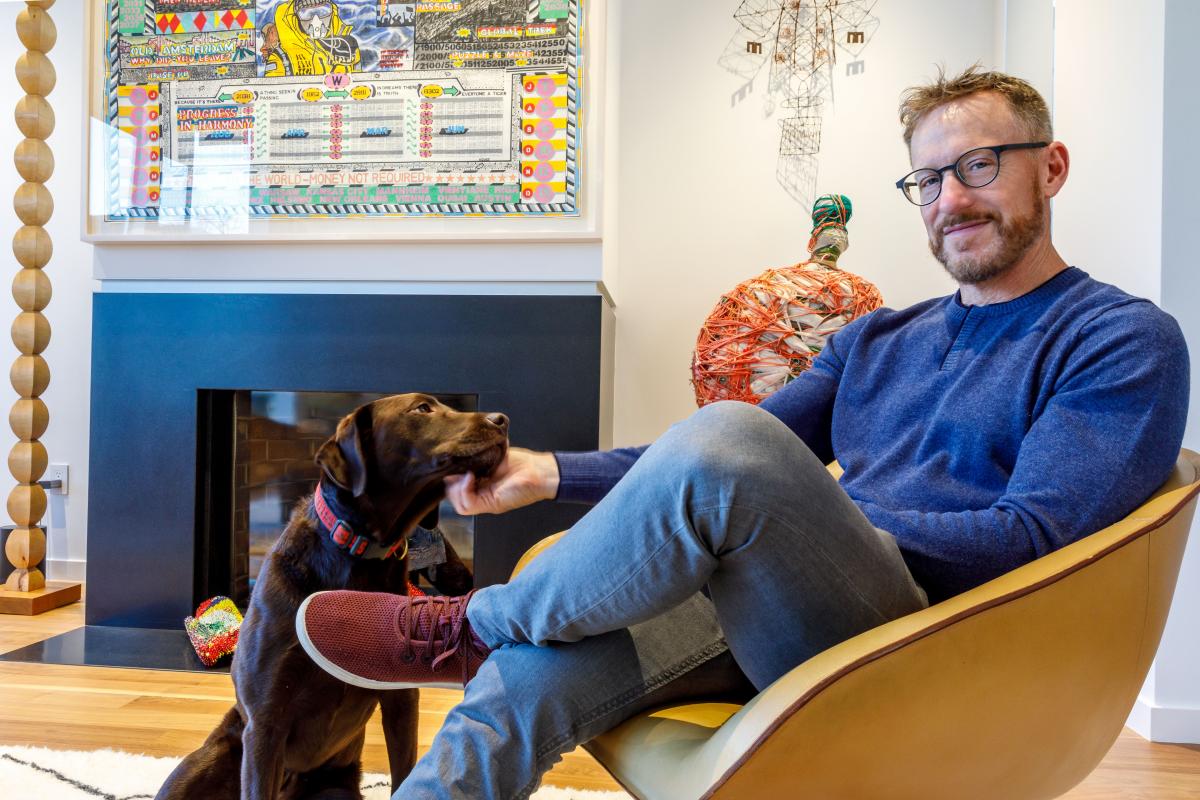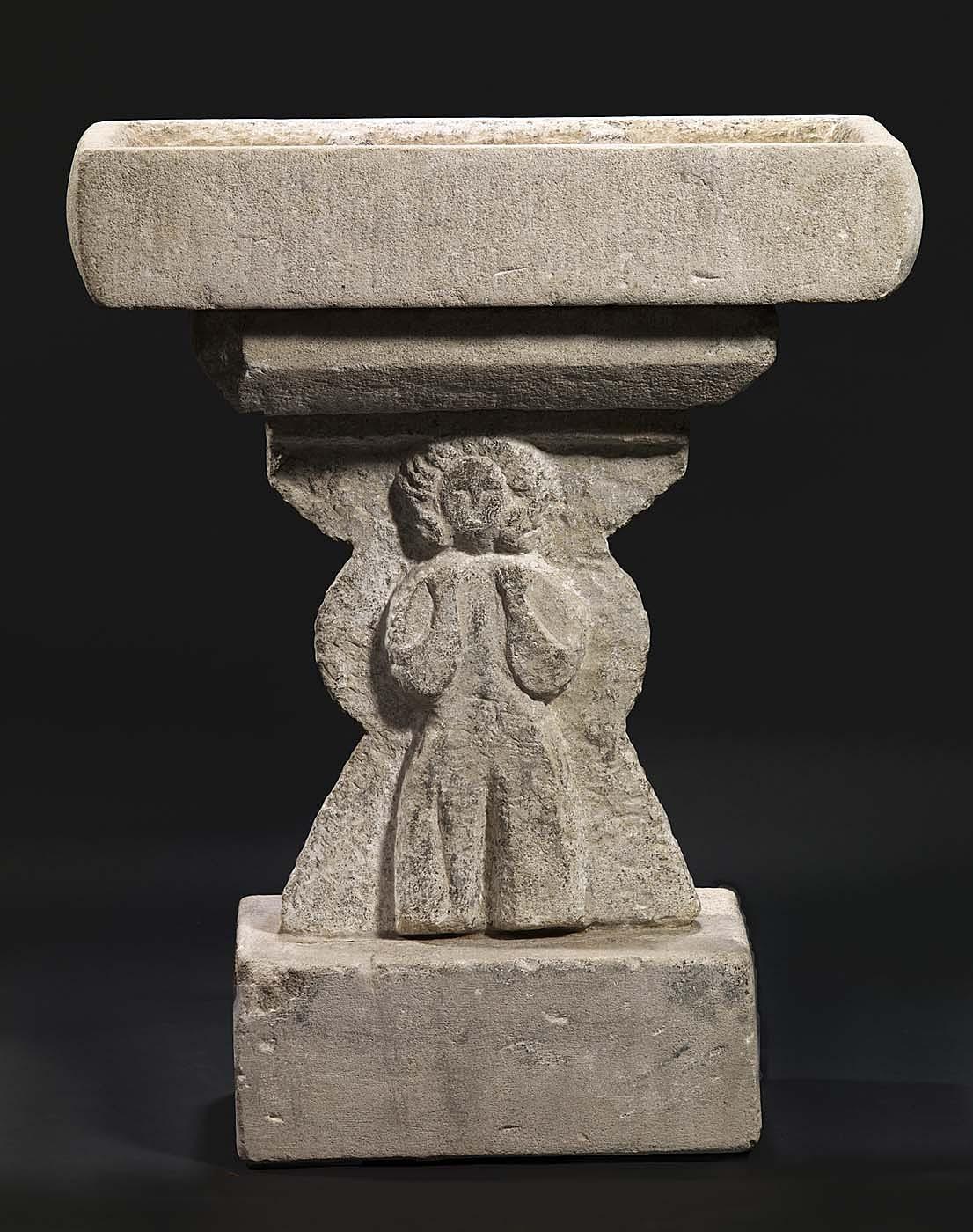Douglas O. Robson is a journalist who has continued his family’s tradition of collecting the work of self-taught artists. His mother, Margaret Z. Robson (1932–2014), valued their artworks and their personal stories, believing both offered a truer, more complete portrait of our nation's makers and redefined who could be an artist in America. In 2016, he donated ninety-three works from his mother’s collection to SAAM. The exhibition We Are Made of Stories: Self-Taught Artists in the Robson Family Collection features this original gift and a number of artworks from his collection that he has promised to SAAM.
Let's just start by chatting a little bit about your mother. Tell us about Margaret and who she was.
My mother, Margaret, was born in 1932 and raised in a small town in the Midwest in Minnesota, and grew up in a Catholic milieu, went to Catholic schools. Her mother was a piano teacher, divorced and raised four children, including my mother. She grew up and went to the University of Minnesota. When she graduated, she went to the big city, Chicago, and she had a fairly pioneering career as a young business executive. Then she met my father, but before she got married, she was involved with the John F. Kennedy campaign for president in 1960. My mother married my father, John, right after Kennedy was elected, and like a lot of women in that era, gave up her professional aspirations to take on domestic life, which she did with gusto.
My mother valued hard work and industriousness. She was ambitious. My mother was very hands-on at home, and she did the cooking, cared for the children, she entertained.
Is there an early story that she's told you about the beginnings of the collection?
For a long time, my parents didn't really consider themselves collectors. I don't know that there's one crystallizing story, but I do remember them getting into blue jeans and very utilitarian clothing and tromping off to rural areas in the Midwest where we were living and coming back with weathervanes and duck decoys and quilts and things that they used to bring a little bit of color and charm into their home.
Both of my parents were strong believers in the American experiment, and valued the American ideals, real or not, myths or not. In the process, they started to go antiquing in the seventies when that started to become more in vogue. That's how she started to get in touch with what I would call folk art in America.
Were there people who influenced how your mother thought about collecting?
There was one figure in Washington, D.C. I think maybe the first or second time my parents lived there. A socialite named Martha Bartlett, who was married to a famous journalist, took my mother under her wing and showed her the ropes of Washington, of life inside the Beltway, and introduced her to entertaining and decorating, and bolstered her sense of Americana in antiques. Martha was a pivotal figure in my mother's life. [My mother] was a curious person. She liked to ask questions of people. So, collecting was an outgrowth of the way that she collected people around her in a lot of ways.
Meeting Carl Hammer, a Chicago gallerist who would be among the first to advocate for self-taught artists, had a significant impact too. Carl, at the time, hadn't started a commercial gallery yet, and was working partly as a schoolteacher. But I think they both glommed onto this idea that there was something really interesting and intriguing happening in the art world that was folk art, but something more expansive, a little bit more interesting than what had been commonly collected by people up to that time.
What drew your mother further into collecting folk and self-taught art?
My parents moved around geographically—they were back and forth between Chicago and Washington, they lived in Atlanta, they lived in San Francisco, and my mother spent some time at the end of her life in Santa Fe. This experience of different regions and varied socioeconomic situations and ethnicities helped expose her to a diverse array of people and appreciate the different kinds of art that were available around the country. It was interesting that, at the time, my parents were in many ways very mainstream people, but as they became more situated in mainstream culture, their collecting and my mother's collecting suddenly went off into a more personalized, interesting, and expansive direction. So, as much as my parents were conventional people in a lot of ways, their collecting was outside the box, which I think is an intriguing contradiction.
I think what was appealing to my mother about art was that it did challenge a lot of the preconceived notions at the time in which my parents lived. The artists' backstories were important to my mother too: where they came from and how they reclaimed items to produce something that was beautiful and original.
Who were some of your mother's favorite artists?
Georgia’s Ulysses Davis was one of her favorite artists. She got to know Davis through a guy named Jimmy Allen [who] was a “picker” in Georgia—a person who scoured rural places for unique finds. She fell in love with the craftsmanship of Davis, who was a barber by trade, but also had a deep love of America. He carved busts of presidents and Uncle Sam, historical American figures, but he also was deeply rooted in his African heritage.
I can see some pivot points in their collecting—one of the first pieces my parents bought, a drawing by Bill Traylor, was a departure from the folk art and Americana they'd been collecting earlier.
The art of Martín Ramírez and Judith Scott, who were both institutionalized for large parts of their lives but whose creative impulse was irrepressible, really spoke to my mother. Their art is beautiful and has merits all its own. The stories of Ramírez using things like potatoes and saliva to paste pieces of paper together and make these large, beautiful scenes of caballeros and of Mexico, where he came from, are very moving. Over time, his works became more exotic and abstract and surreal.
Judith Scott was a person with Down syndrome. As an adult living in the Bay Area with her sister, she was brought to Creative Growth Art Center. She started to create these exquisite textiles cocooning objects; we don't know what they meant exactly to her, but there was certainly a methodology in what she did. I think both of those artists were among my mother's favorites because of the odds that they surpassed in order to bring their vision to the world.
Tell us about your own collecting journey. How did you come to collect and care for the objects in your family's collection?
My collecting journey was a bit of an accidental tourist. I studied a little bit of art history when I was an undergraduate, and I had the pleasure of attending some courses taught by some well-known instructors, Vincent Scully and Robert Farris Thompson. Both of them had an influence on me.
As an adult, I visited museums and I got to know the Creative Growth Art Center when my parents lived in the Bay Area. But I suppose my collecting or my interest in art was partially due to having a front-row seat in my mother’s endeavor, by osmosis and being exposed to the art in our home, and how collecting became more and more a raison d’être for her, certainly after my father passed away.
For me, the learning curve of becoming a collector accelerated after my mother passed away in 2014. She had a substantial collection that she hadn't given me any particular instruction on what to do with it. I think of it as a Judith Scott sculpture writ large. Somehow, I felt like she left me something to try to decode. What happened in that period of transition was that I realized I wanted to take the baton from my mother, that I was energized and inspired by what she'd done and felt like it was an opportunity for me to also learn more about self-taught art and artists and bring their efforts into the fore. That transition got me energized to become a collector myself.
Is there a specific piece in the exhibition that reminds you of your mother?
My mother, later in her life, was a big William Edmondson fan and she acquired a hand-carved limestone bird bath. It is a big, beautiful piece, that I love, which she had prominently placed in the middle of her apartment in Chicago in the last years of her life. It sat on a little bit of an opening in the floor, and she would gently place her mail in the space where water once would have been. There was just something beautiful and utilitarian about the way that she loved that piece of art and incorporated it into her life.
My mother lived with her art. It was a part of her. It was a part of her environment. A lot of the artists that she collected did create personal spaces with their art, Emery Blagdon for example, or Ulysses Davis who had his carvings around his barbershop, or Howard Finster—all these artists often created personal spaces. My mother, in her own way, created her own personal space with the art she collected.
Imagine the moment when you first walked into the We Are Made Stories exhibition. How did you feel seeing the art installed in the gallery?
It was thrilling to see the art in a gallery, having seen it in my parents' homes and some of it in my home. And it was a bit emotional. It triggered a lot of memories of my mother and my family and growing up. I am proud to see this work represented in a place like the Smithsonian, where it is now part of our national collections.
What do you hope visitors to the exhibition might take away from it?
I hope visitors come away with an understanding of the wide diversity of artists out there in the world [and] a sense of the artistic spirit and the artistic compulsion that lives in all of us. It was not an easy road for many of the artists in this collection to bring their vision and their voice into the world, and I think that's really inspiring.
I want visitors to come away with a sense of joy as well, because there is a lot of joy in the art. I'm thinking of someone like Albert “Kid” Mertz and the painted railroad spikes. My mother loved bringing children in to see the pile of painted faces on these railroad spikes. It gave her a lot of pleasure.
I also hope they come away with a reframing, to some degree, of the American story and how that's been told. I think that this will broaden perspectives about a lot of these voices [that] have not been properly heard and have too often been marginalized. I hope it moves the needle in terms of the story of American art.
It's all part of the same story, that complicated web of American life.
This interview took place in February 2022, as part of the production of an introductory video for the exhibition We Are Made of Stories: Self-Taught Artists in the Robson Family Collection. Robson spoke with Kelly Skeen, interpretation specialist in SAAM’s Education department. This story has been edited from a transcript of their conversation for clarity and length.



















